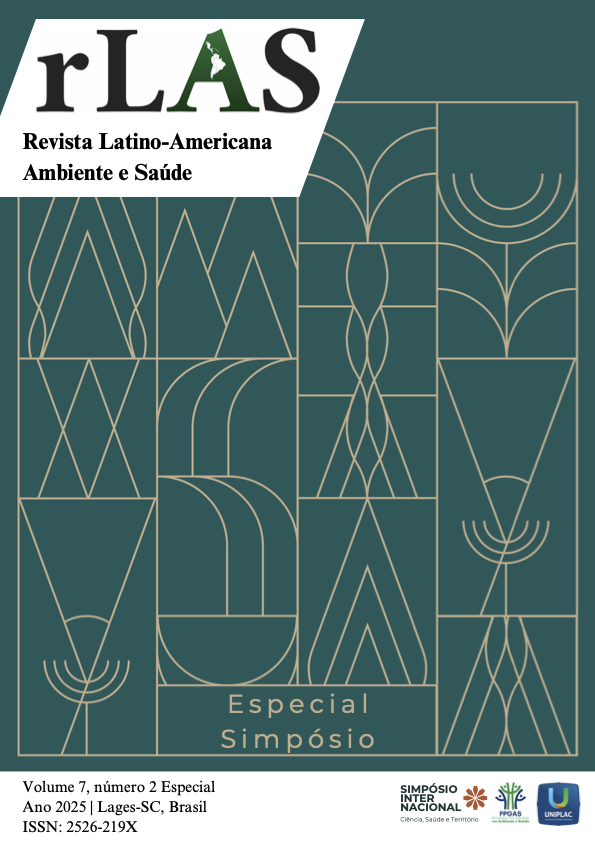The value of small movements: incidental physical activity in real life
Keywords:
incidental physical activity, public health, sedentary behaviorAbstract
Incidental physical activity (IPA) refers to unstructured, unplanned bodily movement that occurs during daily tasks such as walking, household chores, and taking the stairs. Because it is embedded in everyday routines and does not require dedicated time or specific resources, IPA reduces common barriers to physical activity, making it more feasible for diverse populations. This study aims to review recent literature and explore how IPA can be recognized as an effective strategy for health promotion and for addressing sedentary behavior. Evidence shows that even short daily periods of vigorous incidental activity may help reduce cardiovascular risks and contribute to better quality of life. Furthermore, researchsuggests that the way people perceive these daily movements—as valid forms of caring for their health—can positively influence physical health outcomes. This reinforces the need to value simple movements in daily life and to incorporate them into health education initiatives and public efforts to promote active lifestyles. Emphasizing these realistic and accessible practices offers a viable path to support the population in building healthier habits and preventing chronic diseases.
References
BEHM, D. G. et al. Canadian Society for Exercise Physiology position paper: resistance training in children and adolescents. Applied Physiology, Nutrition, and Metabolism, v. 33, n. 3, p. 547–561, 2008. DOI: 10.1139/H08-020.
CHUNG, N. et al. Non-exercise activity thermogenesis (NEAT): a component of total daily energy expenditure. Journal of Exercise Nutrition & Biochemistry, [S. l.], v. 22, n. 2, p. 23-28, 2018.
CRUM, A. J.; LANGER, E. J. Mind-set matters: exercise and the placebo effect. Psychological Science, v. 18, n. 2, p. 165–171, 2007. DOI: 10.1111/j.1467- 9280.2007.01867.x
MYERS, J. et al. Physical activity and cardiorespiratory fitness as major markers of cardiovascular risk: their independent and intertwined importance to health status. Progress in Cardiovascular Diseases, Philadelphia, v. 57, n. 4, p. 306–314, 2015.
WORLD HEALTH ORGANIZATION. Diretrizes da OMS sobre atividade física e comportamento sedentário. Genebra: Organização Mundial da Saúde, 2020. Disponível em: https://www.who.int/publications/i/item/9789240015128. Acesso em: 16 abr. 2025.
REYES-MOLINA, D. et al. Actividad física incidental: avanzar en un paradigma de actividad física integrado y multidimensional. Revista Médica de Chile, Santiago, v. 151, p. 530–532, 2023.
SAAB JUNIOR, Edmond. Os Segredos da Longevidade: um Verdadeiro Manual Para ser Saudável e Viver Mais por Meio da Alimentação, da Medicina Preventiva e do Equilíbrio do seu Organismo, São Paulo, Citadel, 2019.
STAMATAKIS, E. et al. Can incidental physical activity offset the deleterious associations of sedentary behaviour with major adverse cardiovascular events? European Journal of Preventive Cardiology, [S. l.], v. 32, n. 1, p. 1–10, 2025. DOI: 10.1093/eurjpc/zwae316.
TREMBLAY, M. et al. Incidental movement, lifestyle-embedded activity and sleep: new frontiers in physical activity assessment. Applied Physiology, Nutrition, and Metabolism, Ottawa, v. 32, n. S2F, p. S208–S217, 2007.
YOUNG, D. R. et al. Effects of physical activity and sedentary time on the risk of heart failure. Circulation: Heart Failure, Dallas, v. 7, n. 1, p. 21–27, 2014.


